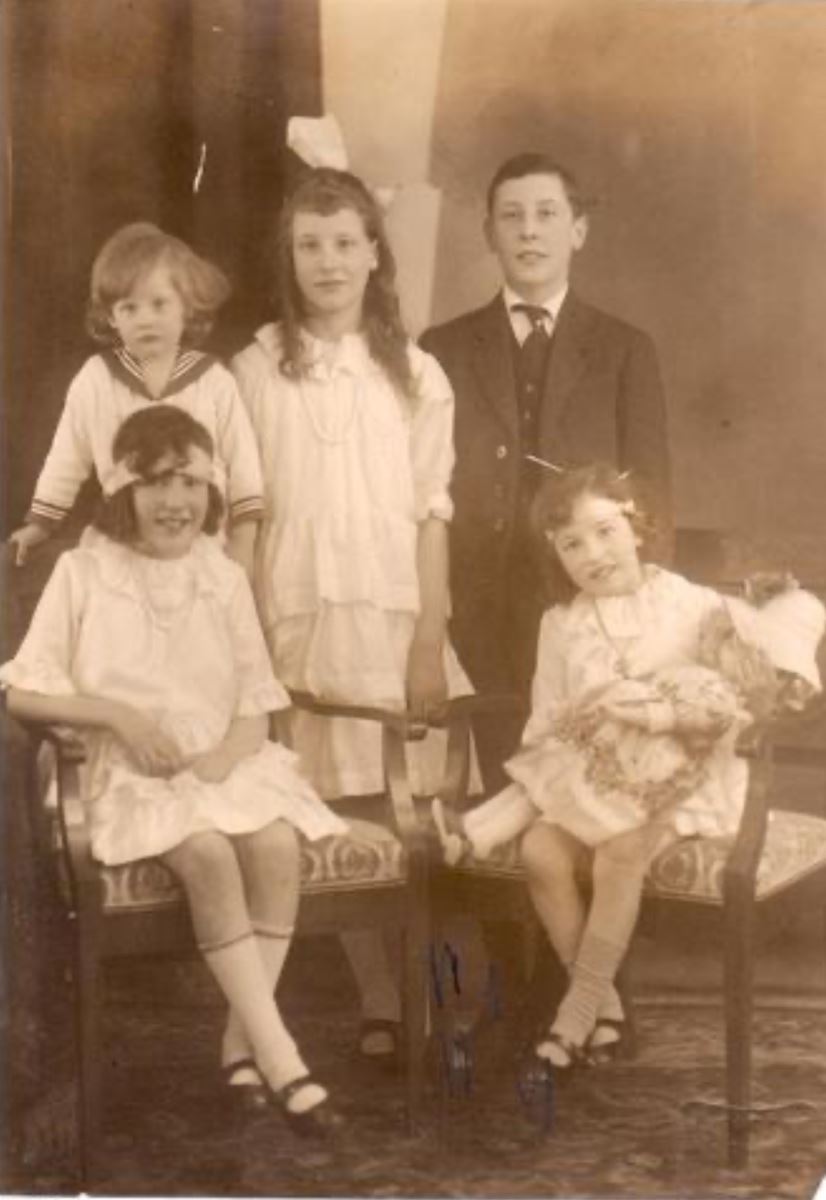In part 1 Lill Fanny Saether outlined how her family was one of a number of Jewish families which settled in Newry at the turn of the 20th century. Her family later went to live in Norway and this week Lill continues her story of her mother, and family members owed their survival in the Holocaust to the fact that having lived in Newry, they had British citizenship. An uncle and aunt of hers who hadn't lived in Newry and didn't have British passports were deported to Auschwitz and murdered.

After the German forces invaded Norway April 9th1940, the Jews in Norway were subjected to special provisions. There were random arrests of Jewish men and properties owned by Jews were confiscated. From February 1942 all Jews had to have their ID-cards stamped with a “J”, and they had to fill in forms with all kinds of personal information.
The real persecutions of the Jews started on October 26th 1942 when all male Jews were arrested. My mother’s youngest brother, Harry Isidor, was arrested the next day and was kept in prison until November 26th. My grandfather was recovering from a hernia operation and was given a respite of fourteen days.
When the Nazis and the Norwegian police came to arrest the women and children on the morning of November 26th, the four women in the family were at home. My mother told me many times that she said to the policeman, “My sister and myself are British subjects, so, you cannot arrest us”. She knew that some nationalities were exempt from the arrest order. My grandmother was not detained either, her husband being “terminally ill” in hospital. To make sure she would not flee, she was ordered to report to the local police station every day.
By that time, my grandfather had actually recovered and was in fact in hiding in the hospital from where my mother rescued him and another patient in the night of December 8th, 1942. Many of the staff in Norway’s hospitals did a tremendous job hiding Jews and thus saving their lives.
However, the Nazis took my mother’s youngest sister, Esther, with them. A ship was waiting in Oslo harbour and the women and children were transported there from all over Oslo. The men arrested in October, among them my mother’s brother, arrived from different prisons and camps.
My mother’s two youngest siblings, Esther and Harry, were two of 532 people, 302 men, 188 women and 42 children on board. After arriving in the Polish town of Stettin after four days in horrendous weather, they were loaded on to cattle carts under massive harassment. On arrival in Auschwitz on December 1st both my mother’s siblings were taken directly to the gas chambers.
The rest of the family went into hiding until the nights of December 15th and 16th when they escaped to Sweden. There were several escape organisations helping people to flee, first and foremost to Sweden. They risked their own lives to save others. Many of the rescuers were women and it was my mother who had contact with the rescuers and arranged the escape for her family.
The 95-kilometre-long journey to the border in the night with old lorries on icy roads took about four hours. It was freezing cold, hazardous, nerve wrecking and an enormous physical strain on the refugees. They were let off quite close to the border and had to walk in total silence through the forest in the dark on a snow filled and icy path.
My mother left Sweden by air for Scotland in April 1943. She had got a position at the Norwegian Consulate in Glasgow. Based on her letters to the parents, we get a good insight into their lives as refugees. The correspondence between them continued until my mother returned to Norway in October 1945, after the liberation. My mother’s parents and sister returned home from Sweden to Norway in July 1945.
My mother, who was born in Newry, was an extraordinary woman who saved her own and several other peoples’ lives during the Second World War. She saved her life because she was a British citizen, and because some Norwegians risked their own lives to save others, and finally because Sweden was neutral and, at least from autumn 1942, received refugees from Norway unconditionally, including Jews. It is important to tell my mother’s story to make sure the Holocaust is never forgotten. Since most of the contemporary witnesses are now dead, those of us who were told of the events, and can document them, should convey the story as loud and often as we can.
Image:
Florence Mendel (standing), Lill’s grandmother, pictured with her mother, Rhoda Yetta Freeman, and her two youngest siblings, Esther and Harry Isidor, in Trondheim c.1920. Esther and Harry were deported from Norway on November 26th 1942 and died in the gas chambers at Auschwitz on 1st December.
Courtesy of Lill Fanny Saether




